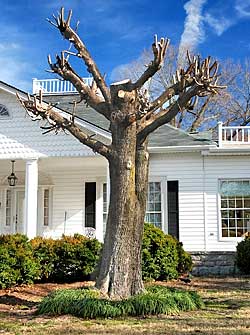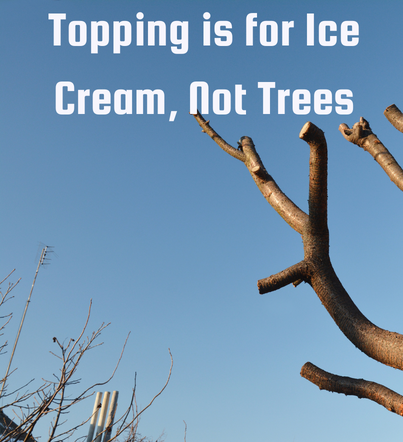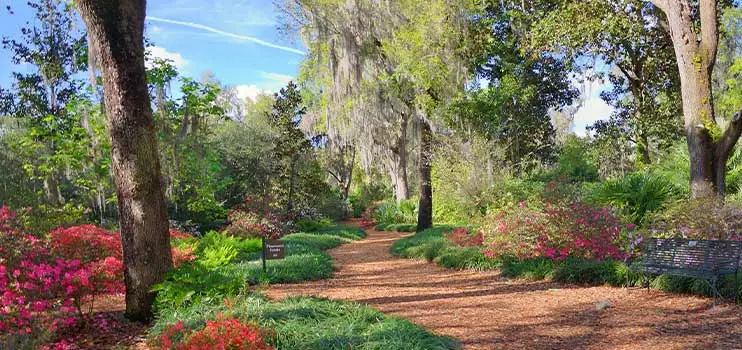
Tree Topping Fiction vs. Facts
Definition: Tree Topping – the removal of main tree branches to stubs in either a straight-across hedge fashion or a complete delimbing of the tree, leaving only the main trunk or trunks of a tree.
Fiction: “Topping rejuvenates the tree.”
Fact: Tree topping usually removes so much of the tree’s crown that it can unbalance an older tree’s root-to-shoot ratio and temporarily cut off its ability to make food. When trees are topped, they will typically respond by readily growing new shoots. From that point forward they become high-maintenance. Most must be pruned regularly in an attempt to restore normal structure and growth. Pruning a tree annually is not environmentally sustainable or cost-effective. Your tree will also be more susceptible to disease and insect problems.
Fiction: “The tree is too big and casts too much shade, and needs to be reduced by topping.”
Fact: By their very nature, trees create shade, which means you really can’t plant anything underneath and expect full success. But in some instances, proper selective pruning, NOT topping, can reduce the bulk of a tree, letting in more light and allowing wind to pass through the tree. Proper pruning does not stimulate regrowth, and the tree will not respond as drastically as when topped or over-thinned. A qualified arborist is trained to understand which kinds of cuts to make (thinning cuts, not heading or topping cuts); he/ she also knows when to stop.
If problems caused by a tree cannot be solved through acceptable management practices, the tree should be removed and replaced with another species, or other plant material more appropriate for the site.
Fiction: “Topping a tree is cheaper than having it pruned.”
Fact: Initially, it might seem cheaper to cut the tree in half to get the result you are looking for. But over time the tree will require more frequent maintenance, and become a danger.
Drastic topping cuts create opportunities for epicormic shoots on the remaining trunk to grow quickly into large, poorly attached branches, if the tree doesn’t just die outright. The potential for them to break off and cause a hazard to property or people is very high. From a legal standpoint, the owner or owners of such a tree may be responsible for damages if it can be proved they were negligent. Incorrect pruning can cause trees to become hazardous, and therefore is negligence.
Fiction: Topping is a time-tested way to prune a tree.
Fact: Topping is not a standard practice, and in fact is “outlawed” by national tree care standards. Topping has always been controversial. If someone tells you they have always done it that way, it’s a good bet they aren’t up to speed with the latest, scientific tree care methods.
Fiction: A banana split with all the toppings is considered a serving of fruit.
Fact: We may not know diets, but we do know trees. Topping is for ice cream, not trees.
So how can you reduce a tree’s growth without the injurious effects of the “toppings?” Consult with a professional arborist who is bound by an industry code of ethics to provide proper pruning according to the profession’s tree care standards.










